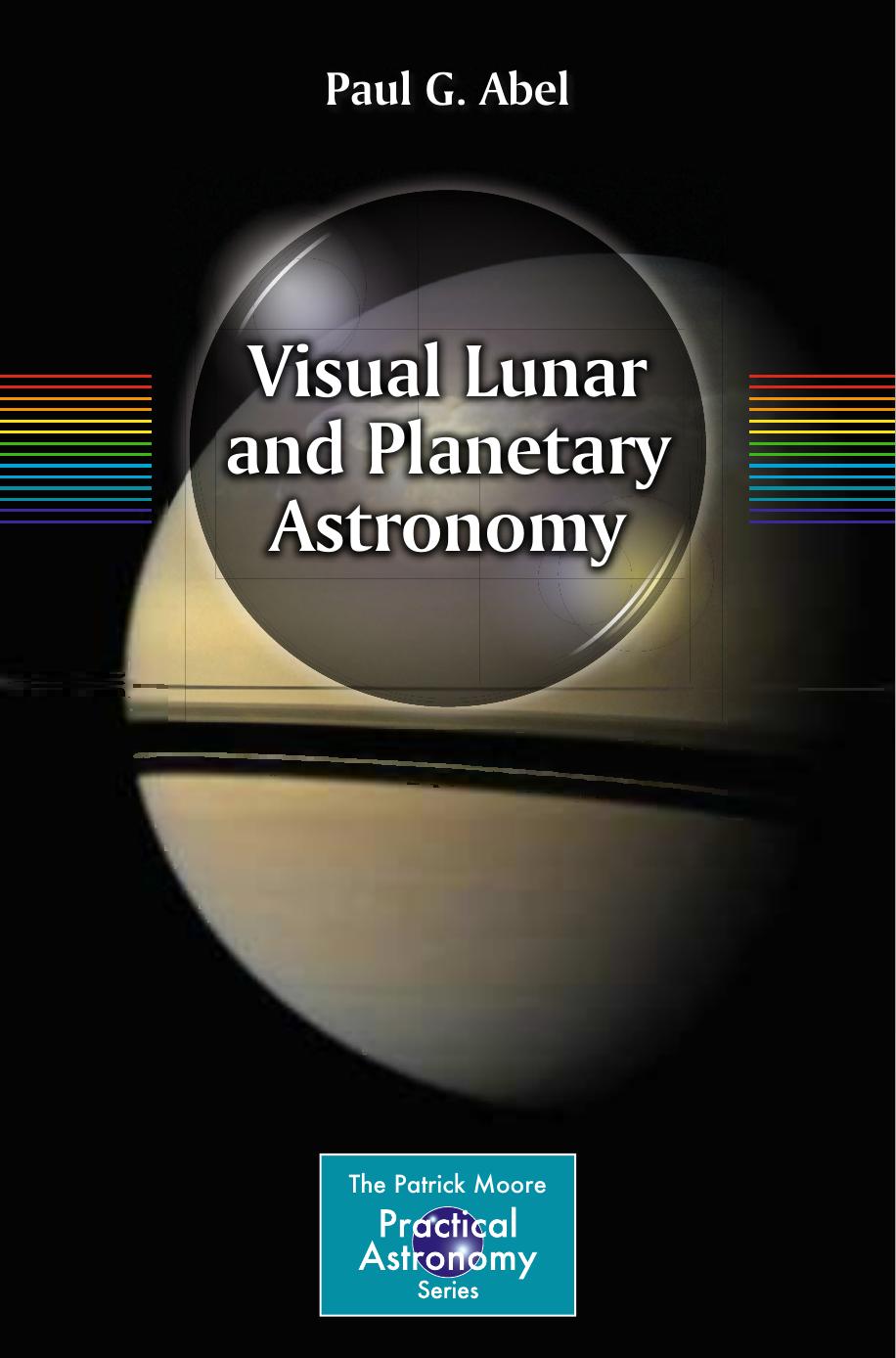Visual Lunar and Planetary Astronomy by Paul G. Abel

Author:Paul G. Abel
Language: eng
Format: epub, pdf
Publisher: Springer New York, New York, NY
Observing Mars
Mars is a somewhat difficult object to observe. As we have seen, the two different types of opposition bring about different problems. At perihelic oppositions the apparent disk size can reach 25², but the planet is hopelessly low down in the south for northern hemisphere observers. At aphelic oppositions the planet is high in the sky, but the disk size may not get much beyond 14². The oppositions either side of these tend to be the best ones for northern hemisphere observers.
It is also true that Mars only really lends itself to close up study with medium to large telescopes. A small telescope (up to 150 mm, say) is unlikely to show much detail until a month or so before opposition (and then for about a month afterward). If you have access to a telescope larger than 150 mm, this will greatly lengthen the time you can spend watching the planet. It is best to start your observations of Mars when the planet reaches a size of 6². This means you can follow the planet for many months of the year. Obviously we want to follow the planet for as long as possible, as Mars undergoes many seasonal changes that need to be tracked and recorded.
Mars tolerates magnification rather well, and you should be able to use a power of 400× with a 200 mm Newtonian. Indeed during the 2011–2012 opposition, there were some excellent seeing conditions and I was able to use a power of ×500. Of course such conditions are rare, and in general powers between ×250 and ×320 are adequate for serious visual work.
Before going out to the telescope, it is worth consulting WinJUPOS to find out what features ought to be present on the Martian disk. However it is worth interjecting a note of warning here. There is a real difference between expecting to see something and seeing something expected! This means we must be constantly careful that we are not observing and drawing exactly what we expect to see. Every time we observe a planet, we must put aside all preconceptions, and observe and record as honestly and objectively as possible.
One thing we should note is the effect that the rotational period of Mars has on Earth-based astronomers. Mars rotates once in 24 h 37 min, so if Syrtis Major is on the central meridian tonight at say 2000UT, then due to Mars’ rotation, Syrtis Major will be on the central meridian at 2037UT the next day. This means it takes about 3 weeks to be able to see the whole of the Martian surface from any one point on Earth. This is why cooperation with astronomers all over the world is important during a Mars apparition. Observations from different countries will allow us to monitor the whole surface in a few days, which we could not do from one fixed location. (This is especially helpful if you find the dull face of Mars is presented and you are then inundated with 3 weeks
Download
Visual Lunar and Planetary Astronomy by Paul G. Abel.pdf
This site does not store any files on its server. We only index and link to content provided by other sites. Please contact the content providers to delete copyright contents if any and email us, we'll remove relevant links or contents immediately.
| Aeronautics & Astronautics | Astronomy |
| Astrophysics & Space Science | Comets, Meteors & Asteroids |
| Cosmology | Mars |
| Solar System | Star-Gazing |
| Telescopes | UFOs |
Tools of Titans by Timothy Ferriss(8212)
Turbulence by E. J. Noyes(7935)
Secrets of Antigravity Propulsion: Tesla, UFOs, and Classified Aerospace Technology by Ph.D. Paul A. Laviolette(5309)
Astrophysics for People in a Hurry by Neil DeGrasse Tyson(5130)
Room 212 by Kate Stewart(5035)
Design of Trajectory Optimization Approach for Space Maneuver Vehicle Skip Entry Problems by Runqi Chai & Al Savvaris & Antonios Tsourdos & Senchun Chai(5011)
Pale Blue Dot by Carl Sagan(4907)
The David Icke Guide to the Global Conspiracy (and how to end it) by David Icke(4624)
A Journey Through Divination and Astronomy by Publishing Pottermore(4340)
Goodbye Paradise(3724)
Apollo 8 by Jeffrey Kluger(3635)
COSMOS by Carl Sagan(3553)
Losing the Nobel Prize by Brian Keating(3498)
The Five People You Meet in Heaven by Mitch Albom(3473)
How to Read Water: Clues and Patterns from Puddles to the Sea (Natural Navigation) by Tristan Gooley(3406)
Brief Answers to the Big Questions by Stephen Hawking(3369)
How to Read Nature by Tristan Gooley(3249)
The Order of Time by Carlo Rovelli(3144)
A Brief History of Time by Stephen Hawking(2959)
